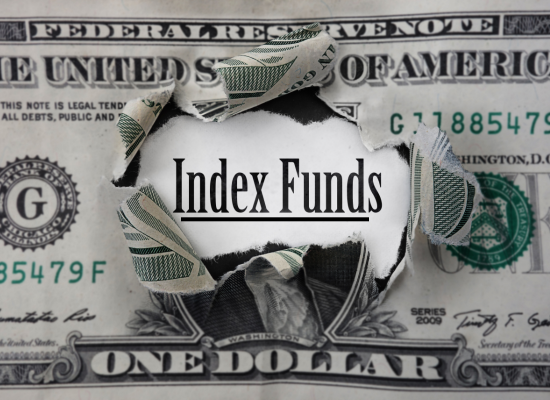Investing can feel like stepping into a new world with its own language—stocks, bonds, dividends, yields, and more. But what really is a stock and what is a bond? If you’re wondering what these terms mean and how they fit into your financial journey, you’re in the right place. In this article, we’ll break down two of the most common investment options—stocks and bonds —using simple language and analogies to make them easy to understand. By the end, you’ll know what they are, how they work, and what makes them different, so you can decide which might suit your goals.
What is a Stock?
Imagine you’re at a neighborhood bakery that’s growing fast. The owner needs money to open a second location but doesn’t want a bank loan. Instead, they offer you a chance to buy a small piece of the bakery. In return, you get a certificate saying you own part of the business. That’s essentially what a stock is—a share of ownership in a company.
When you buy a stock, you become a shareholder, owning a tiny slice of a company, like Apple, Tesla, or even that local bakery if it were publicly traded. Stocks are bought and sold on stock exchanges, like the New York Stock Exchange (NYSE) or Nasdaq, where prices fluctuate based on supply and demand, company performance, and market conditions.
How Do Stocks Work? An Analogy
Think of a stock like a fruit tree in your backyard. You plant it (buy the stock), hoping it grows over time. As the tree matures, it might produce fruit (dividends) or increase in value (stock price growth). But there’s no guarantee — it could face a storm (market crash) or drought (company struggles), reducing its value or fruit output.
Here’s what you need to know about stocks:
- Potential for Growth: Stocks can appreciate in value, meaning the stock price increases. If you buy a stock for $50 and it rises to $75, you could sell it for a capital gain of $25 per share. This growth isn’t guaranteed, though—prices can also drop, leading to a loss.
- Dividends: Some companies pay dividends, a portion of their profits distributed to shareholders, usually quarterly. It’s like getting apples from your tree. However, dividends aren’t guaranteed. A company might skip them if profits are low or reinvest earnings instead.
- Risk and Reward: Stocks are considered equity investments because you own part of the company. They offer high potential returns but come with higher risk. If the company thrives, your stock value could soar. If it fails, you could lose your investment, especially if the company goes bankrupt (though shareholders are last in line for any remaining assets).
- Voting Rights: Many stocks (called common stocks) give you voting rights on company decisions, like electing board members. It’s like having a say in how the bakery runs, though your influence depends on how many shares you own.
Why Invest in Stocks?
Stocks are popular because they offer a chance for long-term growth. Historically, stocks have outperformed other investments like bonds over decades, though past performance isn’t a guarantee. They’re ideal for investors willing to tolerate ups and downs for potentially higher returns. However, stock prices can be volatile, influenced by economic conditions, company news, or even global events.
What is a Bond?
Now, let’s switch analogies. Imagine you lend money to a friend who’s starting a coffee shop. They promise to pay you back in five years with a little extra each year as a thank-you. That’s similar to a bond — a loan you make to a company, government, or other entity in exchange for regular interest payments and the return of your initial investment at the end.
When you buy a bond, you’re not owning a piece of the company like with a stock. Instead, you’re acting as a lender. Bonds are issued by corporations, governments (like U.S. Treasury bonds), or municipalities to raise money for projects, operations, or debt refinancing.
How Do Bonds Work? An Analogy
Think of a bond like renting out a reliable lawnmower. You lend it to a neighbor (the bond issuer) who agrees to pay you a small rental fee (interest) every six months. At the end of the rental period (maturity date), they return the lawnmower (your principal). Unless your neighbor goes out of business (defaults), you get steady payments and your lawnmower back.
Key features of bonds include:
- Principal and Maturity: When you buy a bond, you lend a specific amount, called the principal or face value (say, $1,000). The bond has a maturity date, when the issuer promises to repay the principal. Maturities can range from a few months to 30+ years.
- Interest Payments (Coupon): Bonds pay a coupon rate, the annual interest rate based on the principal. For example, a $1,000 bond with a 5% coupon pays $50 yearly, often split into two $25 payments every six months. These payments are pre-agreed, so you know what to expect unless the issuer defaults.
- Default Risk: Bonds are debt investments, meaning the issuer owes you money. If the issuer (e.g., a company) goes bankrupt, they might default, failing to pay interest or principal. Government bonds, like U.S. Treasuries, are considered low-risk, while corporate bonds vary based on the company’s financial health.
- Price Fluctuations: Bonds can be sold before maturity in the secondary market, but their price may fluctuate. If interest rates rise, existing bonds with lower coupons become less attractive, lowering their price. If rates fall, bond prices may rise. However, if you hold the bond until the maturity date, you get your full principal back (assuming no default).
Why Invest in Bonds?
Bonds are often seen as safer than stocks because they provide predictable income through interest payments and return your principal at maturity (assuming no default). They’re popular for income-focused investors or those seeking stability, like retirees. However, bonds typically offer lower returns than stocks over the long term, and their value can be affected by interest rate risk or inflation risk (when inflation outpaces the coupon rate).
Stocks vs. Bonds: Key Differences
Let’s compare stocks and bonds using our analogies:
| Feature | Stocks (Fruit Tree) | Bonds (Lawnmower Rental) |
|---|---|---|
| What You Own | Ownership in a company (equity). | A loan to a company or government (debt). |
| Returns | Potential capital gains; dividends (not guaranteed). | Pre-agreed interest payments; principal at maturity. |
| Risk | Higher—prices can drop, no guaranteed return. | Lower—steady payments unless issuer defaults. |
| Time Horizon | Often long-term for growth. | Fixed term (short to long-term). |
| Influence | Voting rights (for common stocks). | No ownership or voting rights. |
A Real-World Example
Suppose you invest $1,000 in a tech company’s stock and $1,000 in a corporate bond:
- Stock: The company grows, and the stock price rises to $1,500 in five years. You sell for a $500 capital gain. They paid a $20 annual dividend, but it wasn’t guaranteed. If the company struggled, the stock could’ve dropped to $700, risking a loss.
- Bond: The bond pays a 4% coupon ($40 yearly) and returns your $1,000 at maturity in five years. You earn $200 in interest over five years, assuming no default. If interest rates rise, the bond’s market value might dip if you sell early, but holding to maturity ensures your principal.
Which Should You Choose?
Stocks and bonds serve different purposes in a portfolio:
- Stocks suit investors seeking growth and willing to accept volatility. They’re like planting a tree for future fruit and shade, but you need patience through storms.
- Bonds appeal to those prioritizing income and stability, like renting out a lawnmower for steady cash. They’re less risky but offer modest returns.
- Diversification: Many investors hold both to balance risk and reward. Stocks fuel growth, while bonds provide a safety net. Additionally, investors look for index funds, which offer broad market exposure, low costs, and a simple way to diversify across hundreds or thousands of stocks or bonds, reducing the risk of relying on a single investment.
Final Thoughts
Stocks and bonds are building blocks of investing, each with unique risks and rewards. Stocks offer ownership and growth potential but no guarantees, like a fruit tree that may or may not thrive. Bonds provide predictable income and principal repayment, like a reliable rental agreement, unless the issuer defaults. Understanding these differences helps you align your investments with your financial goals, risk tolerance, and time horizon.
Ready to start investing? Research companies or bonds, consider your goals, and maybe consult a financial advisor to create a balanced portfolio. Whether you’re planting trees or renting lawnmowers, investing is about building a brighter financial future.


